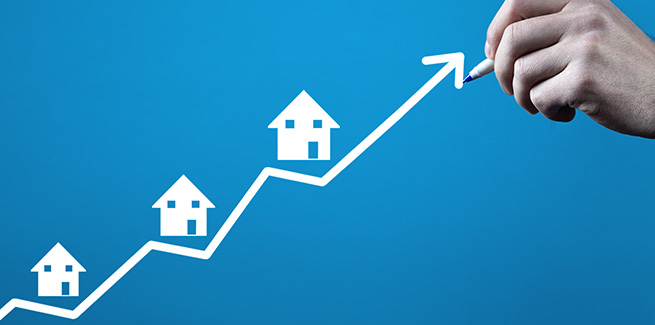An analysis from PIPA of five periods of rising cash rate movements since 1994 has shown that house prices continued to rise, sometimes significantly, even after rate rises of up to 2.75 percentage points over just six months.
Over the course of six months from June to December 1994, the cash rate rose by 2.75 per cent, while house prices climbed by 1.1 per cent.
During the 12 months from September 1999, the cash rate grew by 1.5 per cent, while house prices rose by 7.5 per cent.
From March 2002 to December 2003, the cash rate was up by 1 per cent while house prices surged by 35.7 per cent.
For the nine months from March 2006, the cash rate grew by 0.75 per cent, while house prices were up by 8.4 per cent.
During the nine months from June 2007, as the cash rate had a 1 per cent uptick, house prices increased by 8.9 per cent.
Over the year and the three months from September 2009, the cash rate grew by 1.75 per cent while house prices ballooned by 10.5 per cent.
PIPA chair Peter Koulizos commented the movement of property markets often had more to do with local economic conditions, with rate adjustment never being the sole reason.
“There has been much conjecture over the past 18 months that record low interest rates are the singular reason why property prices have skyrocketed, when the cash rate was already at a former record low of 0.75 per cent before the pandemic hit,” he said.
“There are clearly a number of factors at play, including some buyer hysteria I’m afraid to say, but one of the main reasons for our booming market conditions is easier access to credit, which was simply not the case two years ago when rates were also low.
“At the end of the day, even when interest rates are low as they have been for years now, if people don’t have access to finance, it really doesn’t matter what the cash rate is.”
Further, he stated there had been some fearmongering around borrowers and whether they’d be able to afford their mortgages once rates rise, through the use of extreme levels of mortgage debt as examples.
“The latest ABS Lending Indicators showed that the national average loan size for owner-occupier dwellings was $574,000 in September, which shows that the vast majority of people are not racking up massive singular mortgages of $1 million or more,” Mr Koulizos said.
“While we don’t expect rates to rise for a year or two yet – and when they do, they are unlikely to ramp up rapidly – the monthly mortgage repayments on a $574,000 loan may increase by about $73 per week if the interest rate increased 1 percentage point or from 3 per cent to 4 per cent.
“It’s vital to understand that new loans [have] already been stress-tested against much higher interest rates of about 5.65 per cent, so there is little to be gained by alarmist ‘forecasts’ that are just not supported by the data.”
[Related: Most borrowers ready for a rate rise: RBA]
 ;
;